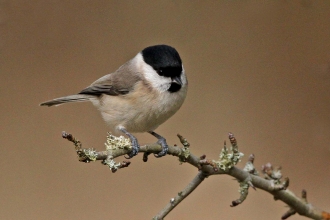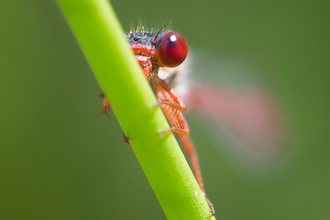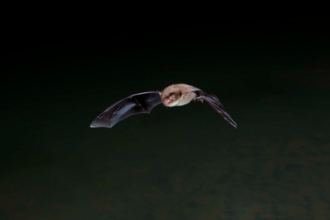Wild Beaver Appeal
Nature has been pushed to the brink, but wild beavers can help turn things around. Beavers are incredible ecosystem engineers. They create wetlands which benefit wildlife, absorb carbon dioxide, reduce flooding, improve water quality. They’re our best hope for nature recovery along our streams and rivers. The only problem is, in the UK, they went extinct in the wild around 400 years ago.
In 2024, two wild beavers arrived at Helman Tor, and since then they’ve been transforming the reserve – coppicing trees, building dams, and creating wetlands teeming with kingfishers, frogs, and dragonflies. But this tentative return is far from secure.
Our plan is to integrate this pair into our project with the aim of boosting genetic diversity overall, by releasing multiple unrelated pairs of wild beavers under license. And you can help us achieve this goal.
Your gift will:
- Help release new beavers into the wild.
- Support health checks to ensure beavers are ready to live in the wild
- Enable ongoing monitoring of the impact of the presence of beavers.
- Support local communities to live alongside beavers.
Beaver Appeal video 2025 (https://youtu.be/w-p2et70g5k)
Meet Sue, and her family of builders.
A story 400 years in the making...
Cornwall Wildlife Trust has the opportunity to release multiple pairs of beavers into the wild. We’ve identified suitable habitat, collected baseline data, engaged local stakeholders, and developed a management plan. The long-term vision is to achieve a self-sustaining and genetically diverse population of beavers in the Par and Fowey river catchments, with a focus on our complex of nature reserves around Helman Tor. But we need your help.
Become part of the wild beavers' story
You can help secure wild beavers’ future in Cornwall, helping to create a Cornwall where nature thrives. Your donation will help achieve a healthy, self-sustaining population of beavers living in Cornish rivers again, so we can all enjoy the benefits this native species will bring.
Any donations received in excess of the fundraising target will continue to be allocated to the Beaver Reintroduction Project.
Gift aid on this appeal will go towards unrestricted funding to support our wider work.
Species helped by beavers
Just some of the species which evidence shows are supported by beaver-created wetlands:

Birds

Dragonflies and damselflies

Bats
Get Involved
The beavers’ story is unfolding, and you can help write the next chapter. Every action - big or small - brings us closer to restoring Cornwall’s rivers and wetlands, and giving these amazing ecosystem engineers the homes they deserve.
There are lots of ways you can support the Wild Beaver Appeal and help us bring more beavers back to the wild. Whether it’s a small gesture or a bigger challenge, every single effort counts.
Here’s some top tips:
- Host a fundraising event: From coffee mornings to nature walks, get friends and family involved while raising vital funds.
- Take on a personal challenge: Run, cycle, swim, or set your own adventure — every mile can help bring beavers back to the wild.
- Use our resources: Download our Fundraising Pack for inspiration and guidance, and our Sponsorship Form to collect donations easily.
- Spread the word: Share the appeal with your community, on social media, at work or at school to inspire others to contribute. Don’t forget to use the hashtag #wildbeaverappeal!
Together, we can create a Cornwall where nature thrives. Start your fundraising journey today!
Your questions answered
How much do you need to raise?
We estimate that this project will cost around £800,000 over ten years. St. Eval is generously funding £50,000 towards this. This public appeal hopes to raise £50,000 to support initial costs, including staffing, a vehicle, surveying and monitoring, beaver traps, and the beavers themselves.
The application process for the wild release licence requires us to show that suitable funds can be accessed to show a financial commitment to begin and sustain a wild release. While we have not yet received the licence, we are confident in the approach we have taken over the last two years in preparation, which has involved public consultations and following all guidance on best practice.
Are beavers living in the wild anywhere else?
Beavers have been reintroduced into 27 European countries, and are becoming more widely spread in the UK. Beavers are now living wild in Devon and, to a much lesser extent, in Cornwall.
This includes a licensed population on the River Otter (in Devon), as well as a population on the Tamar River and its tributaries. Since 2024 we have had a pair of beavers in the Par catchment, around our Helman Tor complex of nature reserves, that were released by an unknown third party. A well-planned release of multiple animals is needed to sustain a genetically healthy population of beavers in Cornwall.
Are there risks with introducing beavers?
We believe that any risks associated with beavers are far outweighed by the benefits. We are confident that in Cornwall we will be able to demonstrate how beavers can work for everyone.
For example, beavers may sometimes build dams, dig burrows, and coppice trees where we don't want them to. We are working with local landowners in advance to plan for their arrival and are putting measures in place where needed.
Natural England has developed a detailed licensing regime and application process to make sure that stakeholders are engaged and landowners are supported. We have been developing our wild release licence for the past two years. When this licence is approved, the project will support landowners and communities through the transition to living alongside beavers.
Is the project area suitable?
We know that our project area is suitable for the reintroduction of beaver, with lots of vegetation, slow flowing water, and pools of water.
Why do beavers build dams?
Beavers live in freshwater habitats, like rivers and streams, and prefer areas surrounded by wetland plants, trees and woodland. They are rather slow on land but excellent swimmers, so they feel safest when they’re close to deep water (around 70cm deep). If the water isn’t deep enough for them, beavers can make it deeper. They use mud, wood, and stones to build dams across shallow rivers, streams and ditches. The dams are leaky and let some water through, but slow down the flow enough for ponds to form, where the beavers can live and feel secure.
What has research from other reintroductions shown?
There is evidence to show that beavers have….
- Led to an increase of three times the diversity of pond and water plants
- Increased frogspawn abundance by over 6000%
- Increased bird species and abundance up to 100m away from beaver sites
- Increased bat activity by almost 400%
- Increased moth species diversity by 24%
- Led to an increase in dragonfly species by seven times
Bringing beavers back: the story so far...
From partnerships to licence applications, every milestone has helped bring us closer to seeing wild beavers shaping our rivers and wetlands once more. Here's how the journey has unfolded so far...
- 2012: Cornwall Wildlife Trust's board agree to become involved in beaver reintroduction after a presentation by expert Derek Gow.
- 2014: Partnership agreed with Chris Jones at Woodland Valley Farm, working towards a fenced release.
- June 2017: A pair of European beavers are introduced to a five acre enclosure on Woodland Valley Farm, thanks to generous donations from the public raising over £20,000 in 59 days!
- April 2019: Two kits (juvenile beavers) are born at Woodland Valley Farm - the first beavers to be born in Cornwall for over 400 years!
- June 2022: The fifth anniversary of beavers at Woodland Valley Farm. Research shows the new beaver-created wetlands have led to significant improvements in biodiversity, including three additional species of mammal, 10 new bird species, 11 species of bat and 17 species of damselfly and dragonfly being recorded on the site.
- April 2023: Cornwall Wildlife Trust partners with St. Eval to appoint a Beaver Officer to work on the first ever licensed wild release of beavers in Cornwall.
- February 2024: Wild beavers are discovered at Cornwall Wildlife Trust's Helman Tor nature reserve, following an observation made by a member of the public.
- September 2024: Evidence of beaver dams and coppiced trees are seen at Helman Tor nature reserve. Cornwall Wildlife Trust's monitoring work reveals wildlife interacting with the beaver-created habitat and increased wetland areas.
- December 2024: Cornwall Wildlife Trust begin hosting public consultation events across the Par and Fowey catchment area with local stakeholders.
- February 2025: Cornwall Wildlife Trust welcomes the news that the UK Government is now accepting applications for licensed wild release of beavers in England.
- June 2025: Beaver Officer Lauren Jasper officially submits Cornwall Wildlife Trust's application for a wild beaver release licence.
